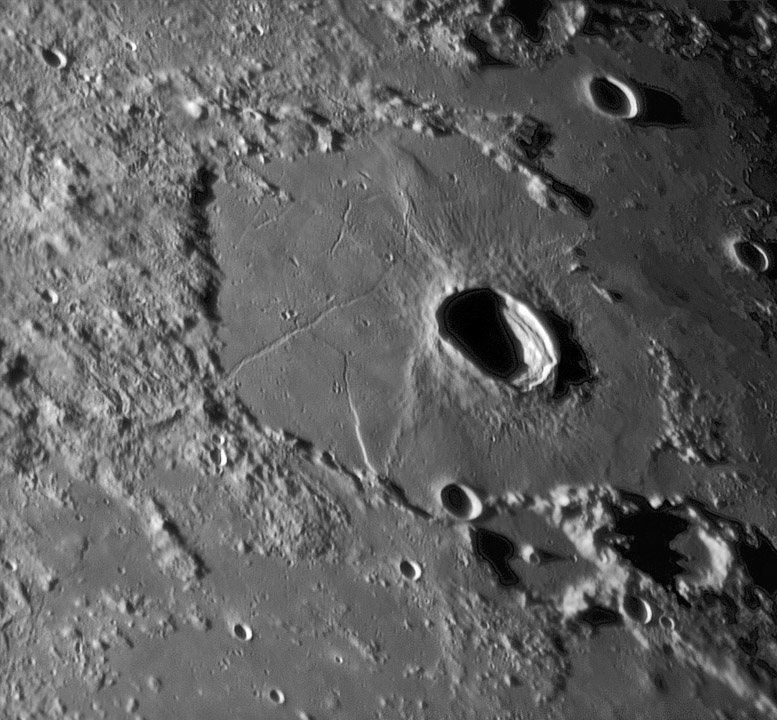
Image by Wes Higgins
The crater or basin called Lacus Mortis is the home for the young impact crater Bürg and a floor of lava cut by delicate rilles and one strange fault. Wes’ excellent image graphically shows how the mound-like rim of Bürg gives way to stripes of ejecta draping the lava. The Clementine color ratio image reveals the ejecta to be red - compositionally different than the surrounding lava - the crater has excavated below the lava to bring up highland rocks. The main diagonal rille on the west side of Lacus Mortis appears to have pits along its floor, as does the wide short rille above it. To the east of Lacus Mortis, where the illumination is more oblique, there is a sharply edged dark area west of Bürg A. If this were a photograph, the dark splotch might have been due to a spilled darkroom chemical that had stained that part of the image. I don’t see evidence of the splotch on Lunar Orbiter IV or Clementine images. But it is hinted at in K.C. Pau’s similar low Sun view. Is this real or a virtual stain? If it is real, what in the world is it?
Technical Details:
07/15/06. 18″ Reflector, Infinity 2-1M camera, 15fps, MAP processing with reference frames, stack of 250 frames. Wes comments: The seeing that morning was the kind that morphs one part of the frame while other parts might be sharp, and I had to use 90 alignment points in pre-processing to keep the image fairly sharp across the entire frame, a total of 10 hours processing time.
Related Links:
Rükl plate 14
Lunar Orbiter IV view
Wes’ website
Yesterday's LPOD: A Moth-Lover's View of the Moon
Tomorrow's LPOD: Long, Thin and Yellow
COMMENTS?
Register, Log in, and join in the comments.



